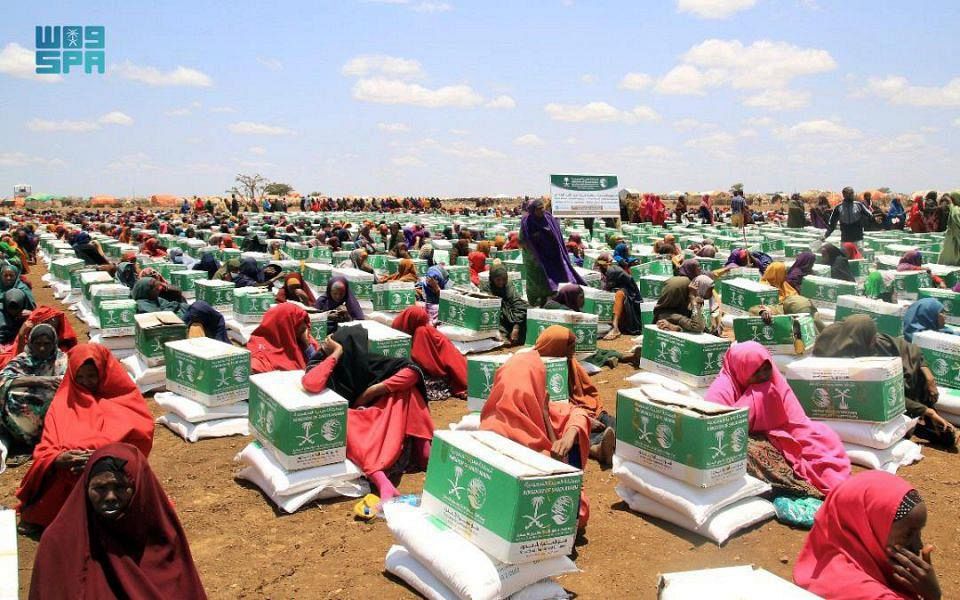
Two areas of Somalia are likely to enter a state of famine later this year as the country battles an unrelenting drought and flare-ups of conflict, the UN humanitarian chief has warned.
Martin Griffiths said the latest UN food insecurity analysis had found “concrete indications” that famine would occur in the Baidoa and Burhakaba districts of south-central Somalia between October and December unless aid efforts were significantly stepped up.
“Famine is at the door and today we are receiving a final warning,” Griffiths, the UN’s under secretary general for humanitarian affairs, said at a news conference in Mogadishu.
According to the Integrated Food Security Phase Classification (IPC), a tracking tool for global hunger, those conditions are likely to last until at least next March.
Somalia has been pushed to the brink by the unprecedented failure of four consecutive rainy seasons, which has forced several hundred thousand people from their homes and placed huge pressure on a country already weakened by decades of conflict.
Griffiths compared the crisis to that of 2010-11, when famine claimed nearly 260,000 lives, half of them children. By the time the hunger and malnutrition levels had been officially recognised as a famine, prompting a scaling-up of aid, it is thought that more than 100,000 people had already died.
This time, Griffiths said, the trends underlying the crisis were if anything worse than in 2010 – and the international community needed to heed the warnings. “Today, we are in the last minute of the 11th hour to save lives. The clock is running, and it will soon run out,” he said.
Donors needed to increase funding, he said, and humanitarian aid groups needed to know they had safe access to those areas most in need. There was still a chance to prevent famine, he added, but the world had very little time.
The IPC assessment, released on Monday, said that, for now, neither Baidoa – where tens of thousands of internally displaced people are temporarily housed – nor Burhakaba districts met the criteria for famine.
But it predicted that, with the drought likely to worsen, the security situation volatile, and food prices high, these areas would probably cross that threshold at some point during the last three months of the year “in the absence of significant humanitarian assistance reaching people most in need”.
The famine projection was described as signalling “a narrow window of opportunity to act in order to prevent what could otherwise become a full-fledged famine in Bay region in a few months”.
Griffiths described Baidoa as the centre of the crisis. And in Banaadir, near Mogadishu, medical teams were struggling to keep up with the influx of emaciated children, he said.
“None of the children that I saw at the stabilisation centre in Banadir hospital could smile. Very few could cry. And as we discovered when we left, we had the good fortune to hear a child cry, and we were told that when a child cries, there is a chance of survival.
“Children who don’t cry are the ones we need to worry about,” he added. “And this child, crying anxiously in front of us – the mother smiled.”
Daud Jiran, country director for the aid organisation Mercy Corps, said: “We are burying babies and watching with heartbreak as mothers cry because they don’t know what to feed their children, now dying of hunger and thirst, and drought robs families of crops and livestock, their only source of income.
“It is infuriating that we have once again reached the brink of famine when we have the tools to combat hunger and prevent starvation,” he said.
Though commonly used to describe extreme hunger, the term famine is used only rarely by the IPC’s food security experts, who define it as an extreme deprivation of food where “starvation, death, destitution and extremely critical levels of acute malnutrition are or will likely be evident”.
For a famine to be declared, an area will have at least 20% of households facing an extreme lack of food and 30% of children suffering from acute malnutrition. Two people for every 10,000 of the population will die each day “due to outright starvation or to the interaction of malnutrition and disease”.












